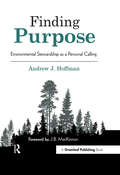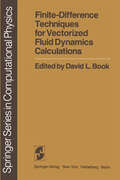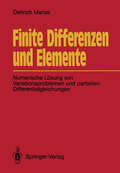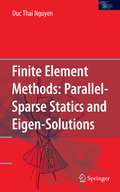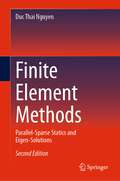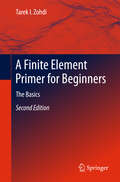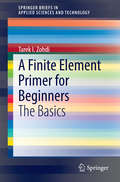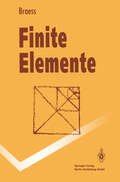- Table View
- List View
Finding Purpose: Environmental Stewardship as a Personal Calling
by Andrew J. HoffmanBoth thoughtful and thought-provoking, Finding Purpose aims to challenge our understanding of how humanity interacts with planet Earth, and our role within this. This book is an invitation: would you like to participate in one of the most important projects of imagination, perhaps the greatest ever, in human history? Distilling and refining over 20 pieces from a lifetime of work in academia and trade, across speeches, blogs, editorials and essays, Hoffman invites us to look beyond material growth and explore the role of the individual and business in discovering a wider purpose to bring about a balanced and sustainable society. The reader is encouraged to consider humanity’s relationship with the environment through different lenses: business, academia, faith-based and cultural. By bringing them together, Hoffman encourages us to understand our relationship with the planet in a far more holistic sense. Drawing on ideas from philosophy, literature, natural sciences and politics, Hoffman ensures that the ideas he explores are wholly accessible and applicable. Fully substantiated through various research and examples, the issues described are consistently made relevant to the reader.Finding Purpose is the perfect book for anyone – from student to CEO – thinking about their place in the world, and how making changes in our own lives and societies can impact on the world around us.
Finding Solutions of the 21st Century Transportation Problems Through Research and Innovations: Proceedings of the 6th GeoChina International Conference on Civil & Transportation Infrastructures: From Engineering to Smart & Green Life Cycle Solutions -- Nanchang, China, 2021 (Sustainable Civil Infrastructures)
by Zahid Hossain Musharraf Zaman Jiupeng ZhangThis volume presents challenges in transportation infrastructures and geotechniques, advancements in recycling, soil stabilization and reinforcement technologies, and assessments of roadway conditions using modern tools and techniques. The articles presented in this volume focus on fundamental investigations on various aspects of civil engineering materials and structures. The scope of this volume is the application of findings for solving problems in geotechnical, pavement, concrete and transportation engineering using through smart, green and emerging techniques. The primary audience of this work will be researchers, professionals, and practitioners around the world. This volume is based on contributions to the 6th GeoChina International Conference on Civil & Transportation Infrastructures: From Engineering to Smart & Green Life Cycle Solutions -- Nanchang, China, 2021.
Finding the Mother Tree: Uncovering the Wisdom and Intelligence of the Forest
by Suzanne Simard'A scientific memoir as gripping as any HBO drama series' Kate Kellaway, ObserverA dazzling scientific detective story from the ecologist who first discovered the hidden language of trees No one has done more to transform our understanding of trees than the world-renowned scientist Suzanne Simard. Now she shares the secrets of a lifetime spent uncovering startling truths about trees: their cooperation, healing capacity, memory, wisdom and sentience. Raised in the forests of British Columbia, where her family has lived for generations, Professor Simard did not set out to be a scientist. She was working in the forest service when she first discovered how trees communicate underground through an immense web of fungi, at the centre of which lie the Mother Trees: the mysterious, powerful entities that nurture their kin and sustain the forest. Though her ground-breaking findings were initially dismissed and even ridiculed, they are now firmly supported by the data. As her remarkable journey shows us, science is not a realm apart from ordinary life, but deeply connected with our humanity. In Finding the Mother Tree, she reveals how the complex cycle of forest life - on which we rely for our existence - offers profound lessons about resilience and kinship, and must be preserved before it's too late.
Finding the Voice of the River: Beyond Restoration and Management
by Gary J. BrierleyThis book addresses societal relationships to river systems, highlighting many unexplored possibilities in how we know and manage our rivers. Brierley contends that although we have good scientific understanding of rivers, with remarkable prospect for profound improvements to river condition, management applications greatly under-deliver. He conceptualizes approaches to river repair in two very different ways: Medean (competitive) and Gaian (cooperative). Rather than ‘managing’ rivers to achieve particular anthropogenic goals (the former option), this book adopts a more-than-human approach to ‘living with living rivers’ (the latter option), applying a river rights framework that conceptualizes rivers as sentient entities.Chapters build on significant experience across many parts of the world, emphasizing the diverse array of river attributes and relationships to be protected and the wide range of problems to be addressed. Although the book has an environmental focus, it is framed as an argument in popular philosophy, contemplating the agency of rivers as place-beings. It will be of great value to academics, students and general readers interested in protecting river systems.
Fine Scale Characterization of Shale Reservoirs: Methods and Challenges (SpringerBriefs in Petroleum Geoscience & Engineering)
by Mehdi Ostadhassan Kouqi Liu Chunxiao Li Seyedalireza KhatibiThis book summarizes the authors' extensive experience and interdisciplinary approach to demonstrate how acquiring and integrating data using a variety of analytical equipment can provide better insights into unconventional shale reservoir rocks and their constituent components. It focuses on a wide range of properties of unconventional shale reservoirs, discussing the use of conventional and new analytical methods for detailed measurements of mechanical properties of both organic and inorganic constituent elements as well as of the geochemical characteristics of organic components and their origins. It also addresses the investigation of porosity, pore size and type from several perspectives to help us to define unconventional shale formation. All of these analyses are treated individually, but brought together to present the rock sample on a macro scale. This book is of interest to researchers and graduate students from various disciplines, such as petroleum, civil, and mechanical engineering, as well as from geoscience, geology, geochemistry and geophysics. The methods and approaches can be further extended to biology and medicine.
Fine Structures of Hyperbolic Diffeomorphisms (Springer Monographs in Mathematics)
by Alberto Adrego Pinto David A. Rand Flávio Ferreira“Fingerprints” of Climate Change: Adapted Behaviour and Shifting Species Ranges
by G. R. Walther C. A. Burga P. J. EdwardsIn recent years an increasing number of studies have been published reporting observations of adapted behaviour and shifting species ranges of plant and animal species due to recent climate warming. Are these `fingerprints' of climate change? An international conference was organised to bring together scientists from different continents with different expertise but sharing the same issue of climate change impact studies. Ecologists, zoologists, and botanists exchanged and discussed the findings from their individual field of research. The present book is an international collection of biological signs of recent climate warming, neither based only on computer models nor on prediction for the future, but mainly on actually occurring changes in the biosphere such as adapted behaviour or shifts in the ranges of species. `Fingerprints' of Climate Change presents ecological evidence that organisms are responding to recent global warming. The observed changes may foreshadow the types of impacts likely to become more frequent and widespread with continued warming.
Finite and Profinite Quantum Systems (Quantum Science and Technology)
by Apostolos VourdasThis monograph provides an introduction to finite quantum systems, a field at the interface between quantum information and number theory, with applications in quantum computation and condensed matter physics. The first major part of this monograph studies the so-called `qubits' and `qudits', systems with periodic finite lattice as position space. It also discusses the so-called mutually unbiased bases, which have applications in quantum information and quantum cryptography. Quantum logic and its applications to quantum gates is also studied. The second part studies finite quantum systems, where the position takes values in a Galois field. This combines quantum mechanics with Galois theory. The third part extends the discussion to quantum systems with variables in profinite groups, considering the limit where the dimension of the system becomes very large. It uses the concepts of inverse and direct limit and studies quantum mechanics on p-adic numbers. Applications of the formalism include quantum optics and quantum computing, two-dimensional electron systems in magnetic fields and the magnetic translation group, the quantum Hall effect, other areas in condensed matter physics, and Fast Fourier Transforms. The monograph combines ideas from quantum mechanics with discrete mathematics, algebra, and number theory. It is suitable for graduate students and researchers in quantum physics, mathematics and computer science.
Finite Difference Computing with Exponential Decay Models (Lecture Notes in Computational Science and Engineering #110)
by Hans Petter LangtangenThis text provides a very simple, initial introduction to the complete scientific computing pipeline: models, discretization, algorithms, programming, verification, and visualization. The pedagogical strategy is to use one case study – an ordinary differential equation describing exponential decay processes – to illustrate fundamental concepts in mathematics and computer science. The book is easy to read and only requires a command of one-variable calculus and some very basic knowledge about computer programming. Contrary to similar texts on numerical methods and programming, this text has a much stronger focus on implementation and teaches testing and software engineering in particular.
Finite-Difference Techniques for Vectorized Fluid Dynamics Calculations (Scientific Computation)
by J. P. Boris M. J. Fritts R. V. Madala B. E. McDonald N. K. Winsor S. T. ZalesakThis book describes several finite-difference techniques developed recently for the numerical solution of fluid equations. Both convective (hyperbolic) equations and elliptic equations (of Poisson's type) are discussed. The em phasis is on methods developed and in use at the Naval Research Laboratory, although brief descriptions of competitive and kindred techniques are included as background material. This book is intended for specialists in computational fluid dynamics and related subjects. It includes examples, applications and source listings of program modules in Fortran embodying the methods. Contents Introduction 1 (D. L. Book) 2 Computational Techniques for Solution of Convective Equations 5 (D. L. Book and J. P. Boris) 2. 1 Importance of Convective Equations 5 2. 2 Requirements for Convective Equation Algorithms 7 2. 3 Quasiparticle Methods 10 2. 4 Characteristic Methods 13 2. 5 Finite-Difference Methods 15 2. 6 Finite-Element Methods 20 2. 7 Spectral Methods 23 3 Flux-Corrected Transport 29 (D. L. Book, J. P. Boris, and S. T. Zalesak) 3. 1 Improvements in Eulerian Finite-Difference Algorithms 29 3. 2 ETBFCT: A Fully Vectorized FCT Module 33 3. 3 Multidimensional FCT 41 4 Efficient Time Integration Schemes for Atmosphere and Ocean Models 56 (R. V. Madala) 4. 1 Introduction 56 4. 2 Time Integration Schemes for Barotropic Models 58 4. 3 Time Integration Schemes for Baroclinic Models 63 4. 4 Extension to Ocean Models 70 David L. Book, Jay P. Boris, and Martin J. Fritts are from the Laboratory for Computational Physics, Naval Research Laboratory, Washington, D. C.
The Finite Difference Time Domain Method for Electromagnetics
by Karl S. Kunz Raymond J. LuebbersThe Finite-Difference Time-domain (FDTD) method allows you to compute electromagnetic interaction for complex problem geometries with ease. The simplicity of the approach coupled with its far-reaching usefulness, create the powerful, popular method presented in The Finite Difference Time Domain Method for Electromagnetics. This volume offers timeless applications and formulations you can use to treat virtually any material type and geometry.The Finite Difference Time Domain Method for Electromagnetics explores the mathematical foundations of FDTD, including stability, outer radiation boundary conditions, and different coordinate systems. It covers derivations of FDTD for use with PEC, metal, lossy dielectrics, gyrotropic materials, and anisotropic materials. A number of applications are completely worked out with numerous figures to illustrate the results. It also includes a printed FORTRAN 77 version of the code that implements the technique in three dimensions for lossy dielectric materials. There are many methods for analyzing electromagnetic interactions for problem geometries. With The Finite Difference Time Domain Method for Electromagnetics, you will learn the simplest, most useful of these methods, from the basics through to the practical applications.
The Finite Difference Time Domain Method for Electromagnetics
by Karl S. Kunz Raymond J. LuebbersThe Finite-Difference Time-domain (FDTD) method allows you to compute electromagnetic interaction for complex problem geometries with ease. The simplicity of the approach coupled with its far-reaching usefulness, create the powerful, popular method presented in The Finite Difference Time Domain Method for Electromagnetics. This volume offers timeless applications and formulations you can use to treat virtually any material type and geometry.The Finite Difference Time Domain Method for Electromagnetics explores the mathematical foundations of FDTD, including stability, outer radiation boundary conditions, and different coordinate systems. It covers derivations of FDTD for use with PEC, metal, lossy dielectrics, gyrotropic materials, and anisotropic materials. A number of applications are completely worked out with numerous figures to illustrate the results. It also includes a printed FORTRAN 77 version of the code that implements the technique in three dimensions for lossy dielectric materials. There are many methods for analyzing electromagnetic interactions for problem geometries. With The Finite Difference Time Domain Method for Electromagnetics, you will learn the simplest, most useful of these methods, from the basics through to the practical applications.
Finite Differenzen und Elemente: Numerische Lösung von Variationsproblemen und partiellen Differentialgleichungen
by Dietrich MarsalDas vorliegende Werk ist ein Lehr- und Arbeitsbuch für den Selbstunterricht, für die Rechenpraxis und für Übungen. Es richtet sich an jeden Interessierten, mag er Physiker oder Ingenieur, Analytiker oder Numeriker, Chemiker oder Geowissenschaftler sein, mag er große oder geringe Vorkenntnisse besitzen. Im Teil über finite Differenzen soll der Leser von einfachsten Aufgaben bis hin zu komplexen Problemen und Techniken (numerische Dispersion, upstream-weighting, Vorkonditionierung von Gleichungssystemen usw.) geführt werden, und zwar von der analytischen Fassung der Aufgabe bis zum fertigen, knappen, für dieses Buch entwickelten Programm (in Fortran 77 geschrieben). Der Teil über finite Elemente setzt keine Strukturmechanik voraus. Er spricht Leser an, die finite Elemente als Alternative zu finiten Differenzen betrachten und nur Kenntnisse aus der Differential- und Integralrechnung mehrerer Variablen mitbringen. Deshalb wird die Finite-Element-Methode in einfacher Weise aus dem Grundgedanken des Ritzschen Prinzips entwickelt, und zwar von der Differentialgleichung über die zugehörige Variationsaufgabe zum algebraischen Gesamtgleichungssystem.
Finite Element and Discontinuous Galerkin Methods for Transient Wave Equations (Scientific Computation)
by Gary Cohen Sébastien PernetThis monograph presents numerical methods for solving transient wave equations (i.e. in time domain). More precisely, it provides an overview of continuous and discontinuous finite element methods for these equations, including their implementation in physical models, an extensive description of 2D and 3D elements with different shapes, such as prisms or pyramids, an analysis of the accuracy of the methods and the study of the Maxwell’s system and the important problem of its spurious free approximations. After recalling the classical models, i.e. acoustics, linear elastodynamics and electromagnetism and their variational formulations, the authors present a wide variety of finite elements of different shapes useful for the numerical resolution of wave equations. Then, they focus on the construction of efficient continuous and discontinuous Galerkin methods and study their accuracy by plane wave techniques and a priori error estimates. A chapter is devoted to the Maxwell’s system and the important problem of its spurious-free approximations. Treatment of unbounded domains by Absorbing Boundary Conditions (ABC) and Perfectly Matched Layers (PML) is described and analyzed in a separate chapter. The two last chapters deal with time approximation including local time-stepping and with the study of some complex models, i.e. acoustics in flow, gravity waves and vibrating thin plates. Throughout, emphasis is put on the accuracy and computational efficiency of the methods, with attention brought to their practical aspects.This monograph also covers in details the theoretical foundations and numerical analysis of these methods. As a result, this monograph will be of interest to practitioners, researchers, engineers and graduate students involved in the numerical simulationof waves.
Finite Element Methods: Parallel-Sparse Statics and Eigen-Solutions
by Duc Thai NguyenFinite element methods (FEM), and its associated computer software have been widely accepted as one of the most effective general tools for solving large-scale, practical engineering and science applications. For implicit finite element codes, it is a well-known fact that efficient equation and eigen-solvers play critical roles in solving large-scale, practical engineering/science problems. Sparse matrix technologies have been evolved and become mature enough that all popular, commercialized FEM codes have already inserted sparse solvers into their software. However, a few FEM books have detailed discussions about Lanczos eigen-solvers, or explain domain decomposition (DD) finite element formulation (including detailed hand-calculator numerical examples) for parallel computing purposes. The materials from this book have been evolved over the past several years through the author's research work, and graduate courses.
Finite Element Methods: Parallel-Sparse Statics and Eigen-Solutions
by Duc Thai NguyenThis new edition includes three new chapters, 7 through 9, that have very broad, practical applications in engineering and science. In addition, the author’s latest research results incorporated into the new textbook demonstrates better performance than the popular METIS software for partitioning graphs, partitioning finite element meshes, and producing fill-reducing orderings for sparse matrices. The new Chapter 8, and its pre-requisite, Chapter 7, present a state-of-the-art algorithm for computing the shortest paths for real-life (large-scale) transportation networks with minimum computational time. This approach has not yet appeared in any existing textbooks and it could open the doors for other transportation engineering applications. Chapter 9 vastly expands the scope of the previous edition by including sensitivity (gradient) computation and MATLAB’s built-in function “fmincon” for obtaining the optimum (or best) solution for general engineering problems.
Finite Element Methods and Their Applications (Scientific Computation)
by Zhangxin ChenIntroduce every concept in the simplest setting and to maintain a level of treatment that is as rigorous as possible without being unnecessarily abstract. Contains unique recent developments of various finite elements such as nonconforming, mixed, discontinuous, characteristic, and adaptive finite elements, along with their applications. Describes unique recent applications of finite element methods to important fields such as multiphase flows in porous media and semiconductor modelling. Treats the three major types of partial differential equations, i.e., elliptic, parabolic, and hyperbolic equations.
Finite Element Methods in Linear Ideal Magnetohydrodynamics (Scientific Computation)
by Ralf Gruber Jacques RappazA Finite Element Primer for Beginners: The Basics (SpringerBriefs in Applied Sciences and Technology)
by Tarek I. ZohdiThe purpose of this primer is to provide the basics of the Finite Element Method, primarily illustrated through a classical model problem, linearized elasticity. The topics covered are: • Weighted residual methods and Galerkin approximations,• A model problem for one-dimensional linear elastostatics,• Weak formulations in one dimension,• Minimum principles in one dimension,• Error estimation in one dimension,• Construction of Finite Element basis functions in one dimension,• Gaussian Quadrature,• Iterative solvers and element by element data structures,• A model problem for three-dimensional linear elastostatics,• Weak formulations in three dimensions,• Basic rules for element construction in three-dimensions,• Assembly of the system and solution schemes,• An introduction to time-dependent problems and• An introduction to rapid computation based on domain decomposition and basic parallel processing. The approach is to introduce the basic concepts first in one-dimension, then move on to three-dimensions. A relatively informal style is adopted. This primer is intended to be a “starting point”, which can be later augmented by the large array of rigorous, detailed, books in the area of Finite Element analysis. In addition to overall improvements to the first edition, this second edition also adds several carefully selected in-class exam problems from exams given over the last 15 years at UC Berkeley, as well as a large number of take-home computer projects. These problems and projects are designed to be aligned to the theory provided in the main text of this primer.
A Finite Element Primer for Beginners: The Basics (SpringerBriefs in Applied Sciences and Technology)
by Tarek I. ZohdiThe purpose of this primer is to provide the basics of the Finite Element Method, primarily illustrated through a classical model problem, linearized elasticity. The topics covered are:(1) Weighted residual methods and Galerkin approximations,(2) A model problem for one-dimensional linear elastostatics,(3) Weak formulations in one dimension,(4) Minimum principles in one dimension,(5) Error estimation in one dimension,(5) Construction of Finite Element basis functions in one dimension,(6) Gaussian Quadrature,(7) Iterative solvers and element by element data structures,(8) A model problem for three-dimensional linear elastostatics,(9) Weak formulations in three dimensions,(10) Basic rules for element construction in three-dimensions,(11) Assembly of the system and solution schemes,(12) Assembly of the system and solution schemes,(13) An introduction to time-dependent problems and(14) A brief introduction to rapid computation based on domain decomposition and basic parallel processing.
Finite Element Programs for Structural Vibrations
by C.T.F. RossFinite Element Programs for Structural Vibrations presents detailed descriptions of how to use six computer programs (written in Fortran 77) to determine the resonant frequencies of one, two, and three-dimensional skeletal structures through the finite element method. Chapter 1 is on "The Finite Element Method" and Chapter 2 demonstrates, with the aid of hand calculations, the finite element solution of some smaller structures. Chapter 3 covers "The Modular Approach", and Chapters 4 to 9 describe the six computer programs, with a large number of worked examples. The six computer programs are given in Appendices I through VI, and on a 3 1/2'' disk included with the book. The programs are suitable for use on IBM (or compatible) PC (640K or more) or minicomputer.
Finite Elemente: Theorie, schnelle Löser und Anwendungen in der Elastizitätstheorie (Masterclass)
by Dietrich BraessBei der numerischen Behandlung partieller Differentialgleichungen treten oft überraschende Phänomene auf. Neben der zügigen Behandlung der klassischen Theorie, die bis an die aktuellen Forschungsgebiete heranführt, wird deshalb sehr viele Wert auf die Darstellung von Beispielen und Gegenbeispielen gelegt. Die Bespiele haben mit dazu beigetragen, dass das Buch jetzt zu den Standardwerken bei den Finiten Elementen zählt. Mit der dritten Auflage wurde eine Abrundung bei den Komplexen vorgenommen, deren Bedeutung in den letzten Jahren gewachsen sind: L2-Projektionen in Verbindung mit den FE-Lösern, Fortin-Interpolation und Aufweicheffekte bei gemischten Elementen, Raumzerlegungen bei Mehrgitterverfahren und Locking-Effekte in der Festkörpermechanik wurden stärker eingebettet. Das Buch richtet sich an Studierende der Mathematik im 3. und 4. Studienjahr und in den späteren Kapiteln auch an junge Forscher, bei denen Finite Elemente im Mittelpunkt Ihrer Arbeit stehen.
Finite Elemente: Theorie, schnelle Löser und Anwendungen in der Elastizitätstheorie (Masterclass)
by Dietrich BraessDiese völlig überarbeitete Neuauflage bietet dem Leser eine gründliche Einführung in die Methode der Finiten Elemente, welche heute verstärkt zur numerischen Lösung von partiellen Differentialgleichungen eingesetzt werden. Die Theorie wird so weit entwickelt, daß der Leser mit Kenntnissen aus den Grundvorlesungen des Mathematikstudiums auskommt. Dem für die Praxis relevanten Mehrgitterverfahren und der Methode der konjugierten Gradienten wird ein breiter Platz eingeräumt. Ausführlich wird die Strukturmechanik als ein wichtiger und typischer Anwendungsbereich für Finite Elemente behandelt. Da dieser Aspekt in anderen Lehrbüchern kaum Berücksichtigung findet, wurde er in der Neuauflage stark überarbeitet und abgerundet. Als weitere Ergänzung ist vor allem die Diskussion von a posteriori Schätzern zu nennen.
Finite Elemente: Theorie, schnelle Löser und Anwendungen in der Elastizitätstheorie (Springer-Lehrbuch)
by Dietrich BraessFinite Elemente: Theorie, schnelle Löser und Anwendungen in der Elastizitätstheorie (Masterclass)
by Dietrich BraessBei der numerischen Behandlung partieller Differentialgleichungen treten häufig unerwartete Phänomene auf. Der Autor legt deshalb viel Wert auf die Darstellung von Beispielen und Gegenbeispielen. Die klassische Theorie behandelt er dagegen zügig. Sein Buch ist eines der Standardwerke zu Finiten Elementen. Zahlreiche Abbildungen, Beispiele und Aufgaben sorgen für eine leicht verständliche Darstellung.
